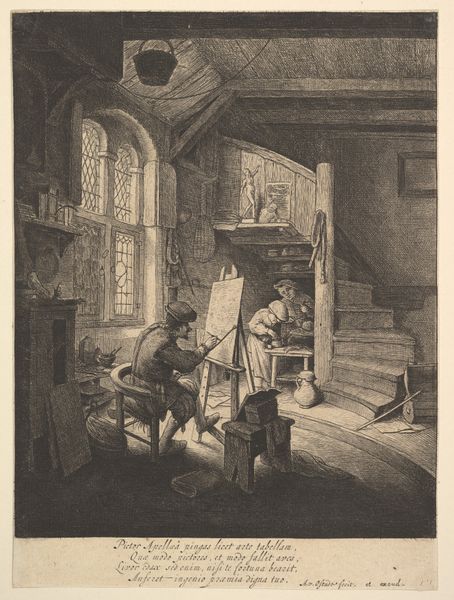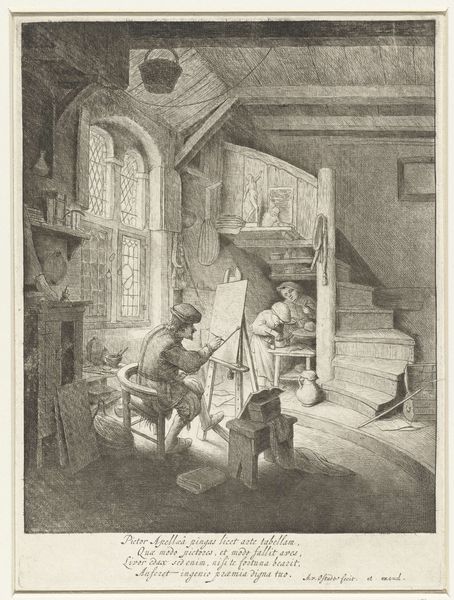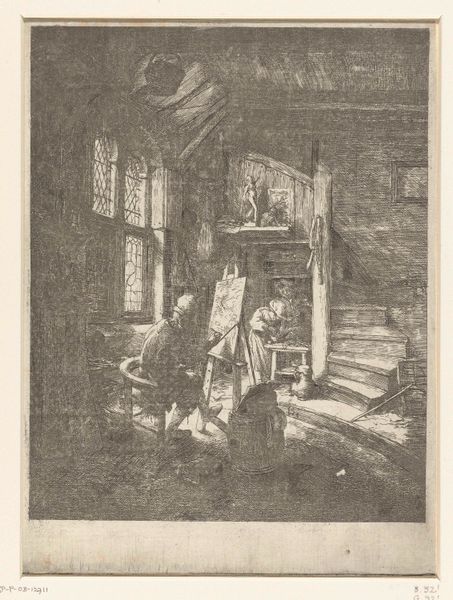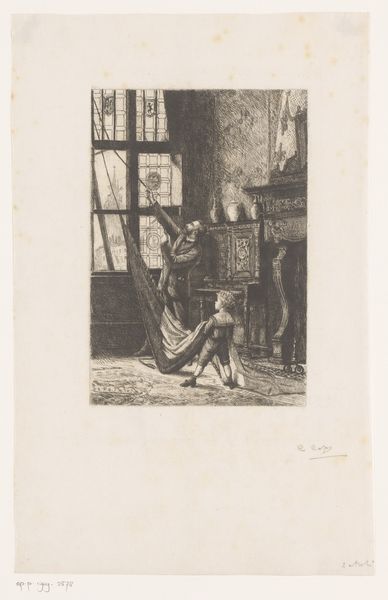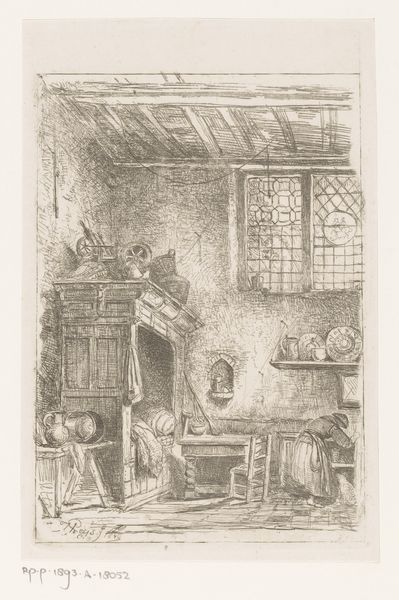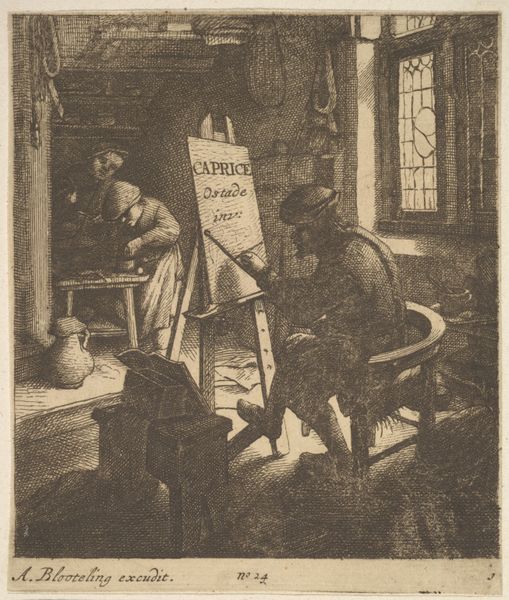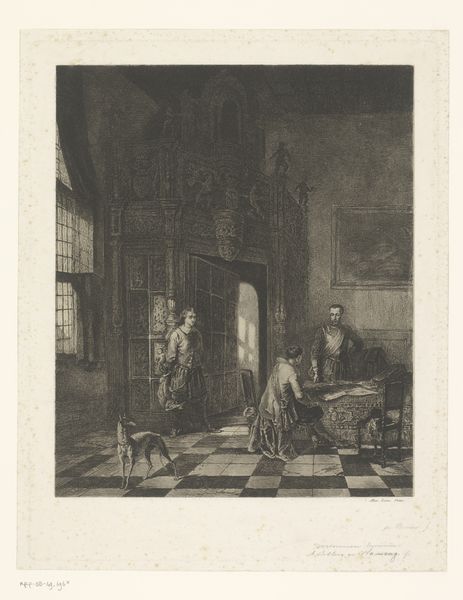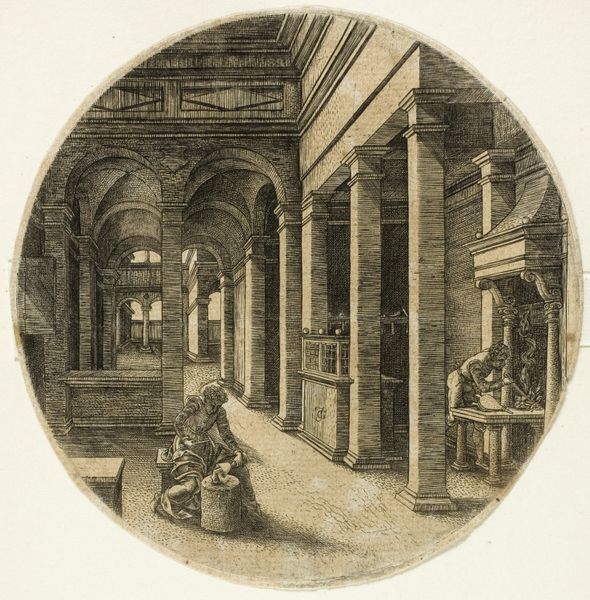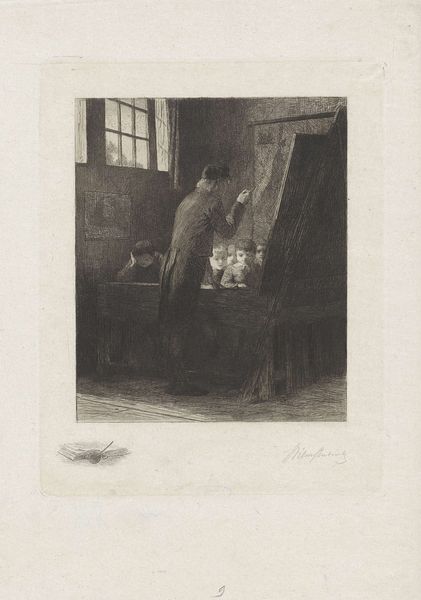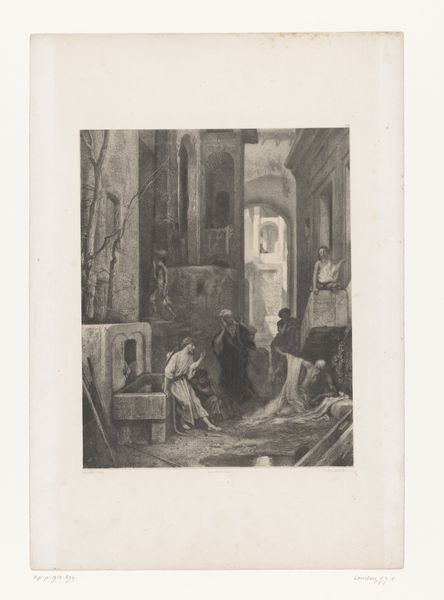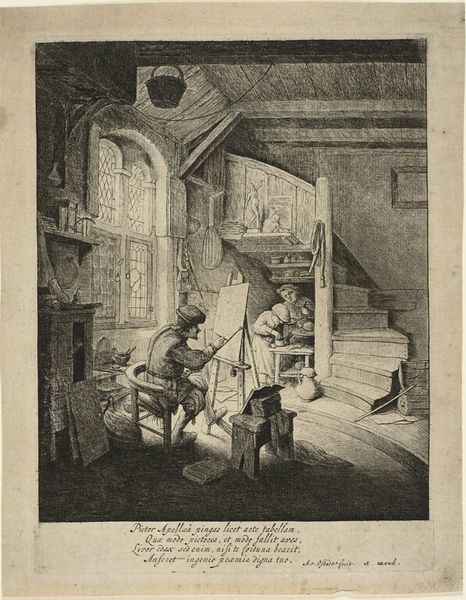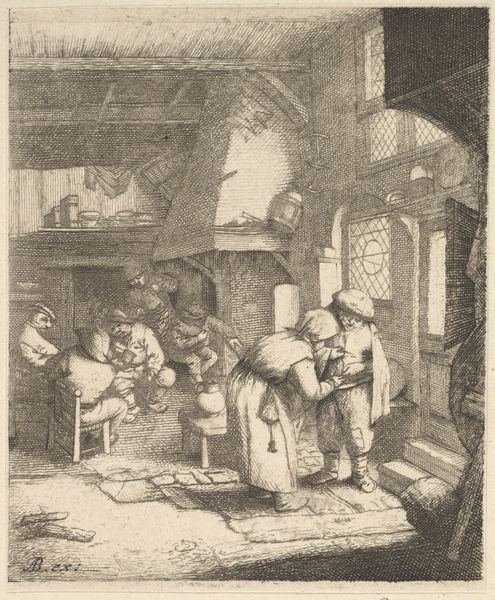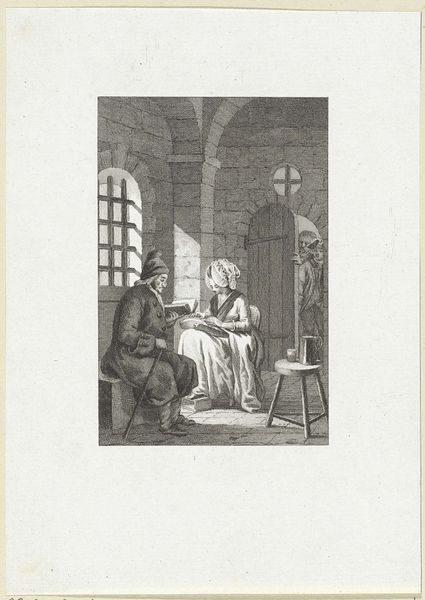
drawing, print
#
portrait
#
drawing
#
dutch-golden-age
# print
#
pencil sketch
#
genre-painting
Dimensions: sheet: 8 1/4 x 6 5/8 in. (21 x 16.9 cm)
Copyright: Public Domain
Editor: So, we’re looking at “The Painter in His Studio” by Adriaen van Ostade, dating from 1662 to 1672. It’s a print, and the scene is so intimate. There’s a real sense of the artist's solitary world. How do you interpret this work, considering the historical context? Curator: Well, what strikes me immediately is how Ostade situates the artist within his working-class environment. The Dutch Golden Age often romanticizes wealth and prosperity. Yet, Ostade offers a glimpse into a more humble reality. We see a cramped space, quite unlike the lavish studios often depicted. What does this juxtaposition tell us about the social position of artists and the perception of art at the time? Editor: That's a really interesting point. I hadn’t considered the studio itself as a statement. Do you think the presence of other figures hints at artistic collaboration or a family trade? Curator: Exactly. The figures working in the background disrupt the myth of the lone genius. This can challenge our notions about artistic production and individual authorship, can't it? It speaks to art as a communal activity embedded in the domestic sphere. It's important to consider what social forces were shaping ideas about the value of artistic labor during that period. The seemingly simple scene is laden with commentary about identity, class, and artistic practice. Editor: That shifts my understanding so much. I was focused on the solitary feel, but it’s actually a commentary on community. Curator: It certainly encourages us to question those prevailing romanticized notions. Seeing beyond the surface representation, we find powerful dialogues about societal structures of that time. Editor: This makes me look at it completely differently. Thank you.
Comments
No comments
Be the first to comment and join the conversation on the ultimate creative platform.
